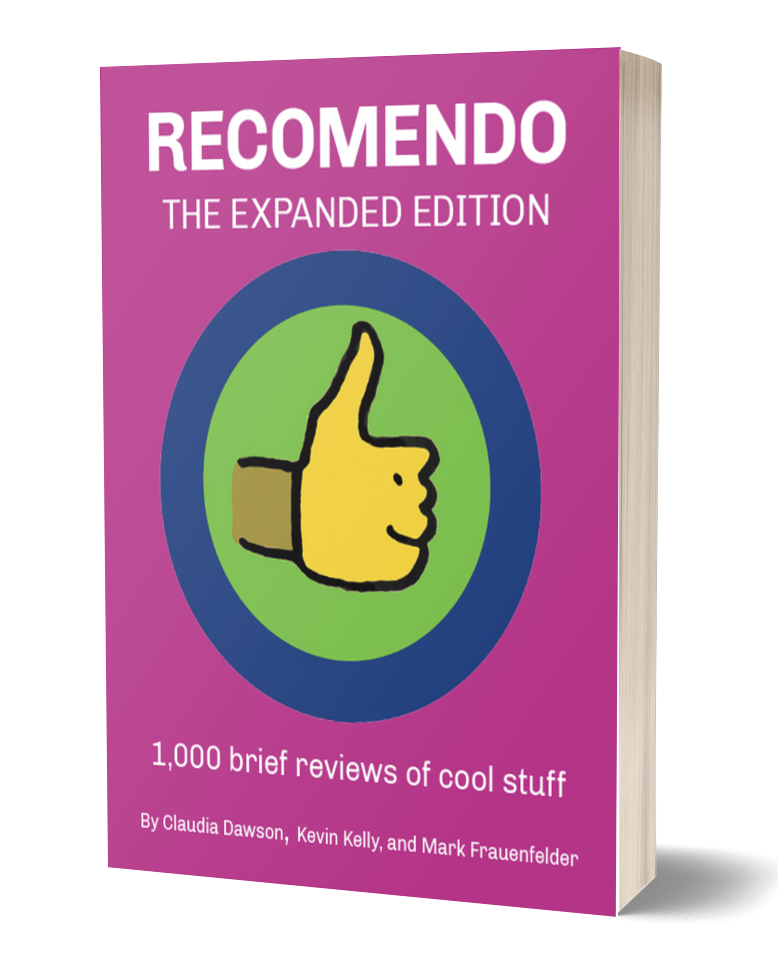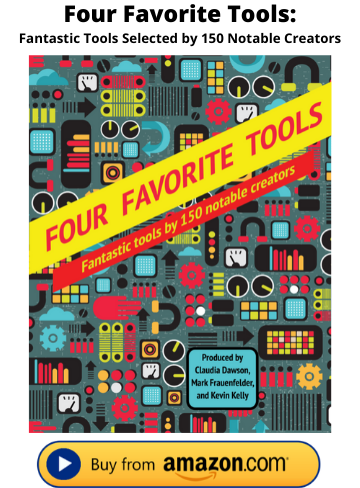22 December 2025
Renovation
Tools for Possibilities: issue no. 169

Complete house building know-how
This is a book I wished I’d had when I started building, but it is also one that’s extraordinarily useful to more experienced builders. Mike Litchfield was the original editor of Fine Homebuilding; in 1982 he published the first version of Renovation, and it’s been updated periodically, this being the latest and 4th edition. Popular Science called it “The most comprehensive single volume on renovation ever” — which is totally true.
What differentiates this book from others of its ilk is that the author has gathered all this information in the field, interviewing carpenters, electricians, plumbers, and contractors, finding out what’s important, what works, what’s new. These guys love to talk about what they do well, and in this sense, the book is one of collective wisdom. It’s at the same time highly useful to professionals, but also one that’s invaluable for homeowners and people of the fixer-upper persuasion.
The chapter “Planning Your Renovation” is completely new, reflecting the current interest in smaller projects, spending wisely, and energy efficiency. The chapter on wiring covers code changes, and tells you things like how to fish wire, install wireless switches, or replace old incandescent ceiling lights with energy-efficient LEDs.
There’s a section on installing IKEA cabinets, tips and instructions on energy retrofits, working with paperless drywall (in wet areas), soundproofing, cutting into a concrete floor, working with PEX plumbing tubing, and installing engineered flooring. I found myself flipping through the book at random, and learning a lot. —Lloyd Kahn
Trim on older buildings is rarely level or parallel. Thus new trim maybe look better if it’s installed slightly out of level so that it aligns with what’s already there. For example, when stretching a chalkline to indicate the bottom of the water table, start level and then raise or lower the line until it looks right in relation to nearby windowsills and the like. Once the chalkline looks more or less parallel to existing trim, snap it on the building paper, and extend it to corner boards.

Avoid the sun around the house as you paint so that you apply paint in the shade if possible. Paint applied in full sunlight is more likely to blister later.
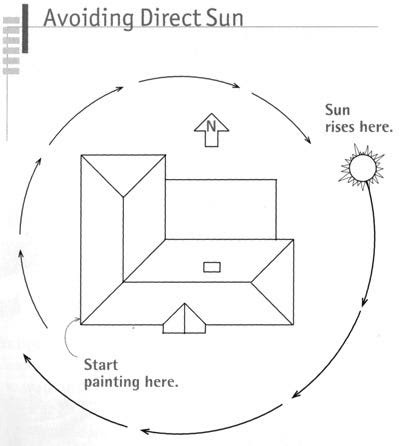
Cracked plaster often means that it has pulled free from its lath. Use screws and plaster washers to reattach it, countersinking them so they’ll be easier to patch.
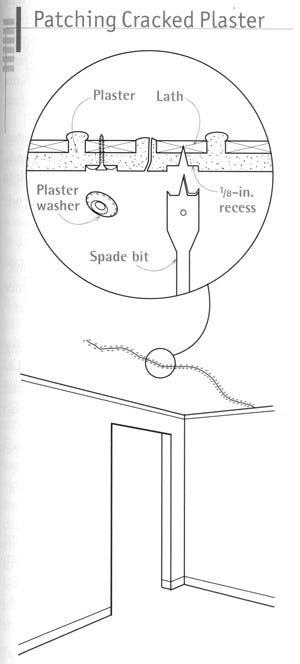
To insert a replacement board into an existing tongue-and-groove floor, use a tablesaw to remove the bottom of the groove. Slightly back-cut the ends of the new board so it will slide in easier.
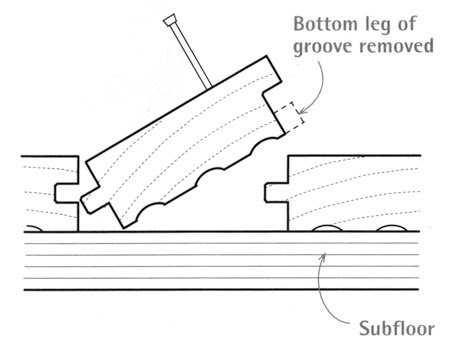
PEX Advantages
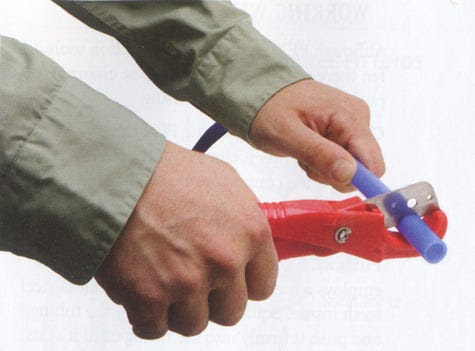
It installs quickly. Because lengths of flexible tubing easily turn corners and snake through walls, PEX systems require far fewer connections and fittings than do rigid materials. For that reason, it’s particularly well suited to renovation work.
Fewer leaks. PEX tubing runs to fixtures from hot- and cold-water manifolds with multiple takeoffs. Most of the fitting is simple, consisting of crimping steel or copper rings onto tubing ends. Because most leaks occur at joints, fewer fittings also mean fewer leaks.
It’s quiet. The tubind expands slightly, minimizing air hammer–the banging that takes place in rigid piping when taps are turned off suddenly and running water stops abruptly. That ability to expand also means less-pronounced pressure drops (fewer scalding or freezing showers), and PEX tubing is less likely to rupture if water freezes in it.
The beauty of working with PEX is that is required relatively few specialized tools. Here, an inexpensive PEX-cutting tool with a replaceable blade produces a clean, squared-off end.
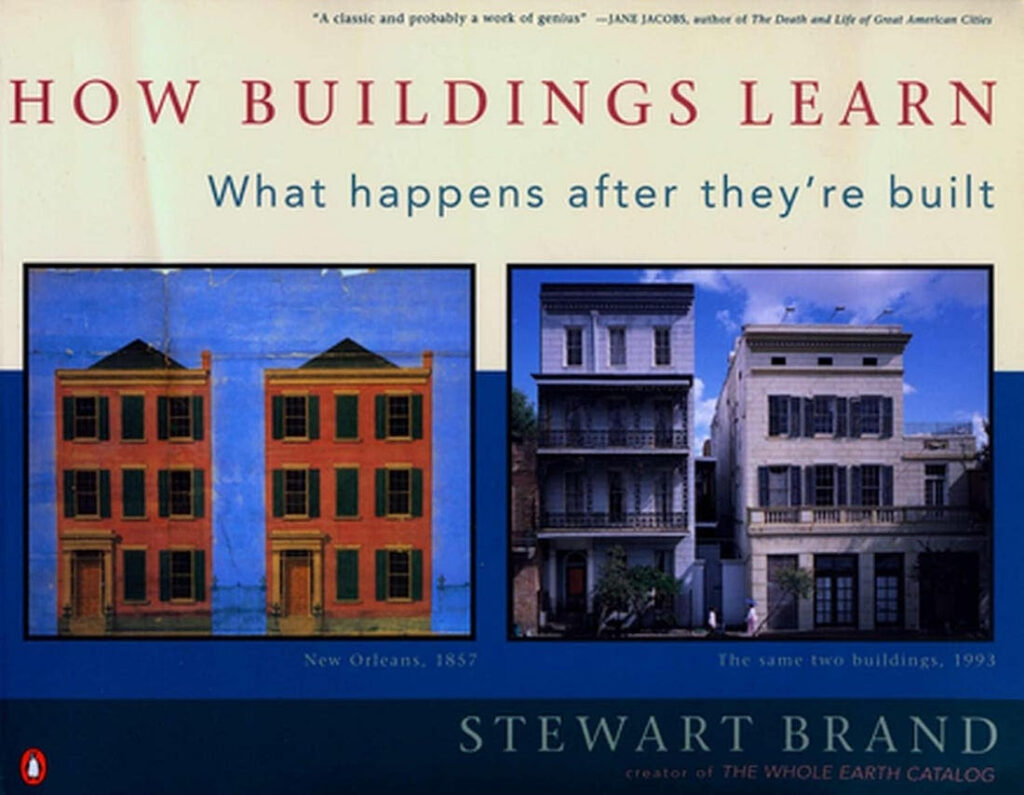
Making adaptable shelter
Every building that endures will be modified. Yet few structures are built to be easily modified. The more stylized a building is now, the harder it is to change. Stewart Brand (who invented the ancestor of Cool Tools) teases out design principles for making buildings that can adapt — or “learn” — to new needs, new uses. While his examples are architectural, showing how the greatest buildings evolve, his advice is aimed at any kind of hard-to-change organization. Software programmers think this book is talking to them since they are often asked to adapt skyscrapers of code built with no concern about adapting it later. This book will be useful to anyone trying to build complicated things that will outlive them. — KK

Once a week we’ll send out a page from Cool Tools: A Catalog of Possibilities. The tools might be outdated or obsolete, and the links to them may or may not work. We present these vintage recommendations as is because the possibilities they inspire are new. Sign up here to get Tools for Possibilities a week early in your inbox.
12/22/2521 December 2025
52 Surprising Things / Watchable American history / See yourself as a verb
Recomendo - issue #493
52 Surprising Things
Every December, writer Tom Whitwell publishes an eclectic list of 52 surprising things Whitwell learned over the year. It’s one of my favorite year-end reads. A few samples:
- Marchetti’s Constant is the idea that throughout human history, from cave dwellers to ancient Greeks to 21st century Londoners, people tend to commute for about an hour a day — 30 minutes out, 30 minutes home. So faster travel leads to longer distances, not less time. [Cesare Marchetti, plus a 2025 update]
- The Casio F91W — the ubiquitous digital watch, worn by Osama Bin Laden, costing just £12 — has been faked for years, and the fakes are getting better and better. [Andy C]
- Childhood peanut allergies are falling dramatically, perhaps because advice to avoid peanuts was reversed. [Simar Bajaj]
Browse his previous lists here. — MF
Watchable American history
I believe every American should be required to watch Ken Burn’s Civil War series to understand their country today. Ken Burns has done it again with his new series on The American Revolution. Six episodes, 12 hours. LIke his other series, it unsettles the story-book history we have in our heads, and celebrates the complexity of the actual ideas, events, and complicated characters at the time. — KK
See yourself as a verb
“The existential balm of seeing yourself as a verb, not a noun” is a perspective‑shifting essay that explores a gentler way to hold the fear of death by reframing the self not as something fixed, but as a natural unfolding process. The author suggests reframing personhood as a shifting weave of body, breath, memory, mood, and perceptions, always in motion and in relationship with the world. The idea is to loosen perfectionistic pressure around having to be a fixed, definitive “someone,” and instead approach death as a quieting down of processes rather than the annihilation of a solid self. — CD
Sharpen dull Airbnb knives
I’ve stayed in Airbnbs in many different countries, and have learned one universal truth: the kitchen knives are invariably dull. As a service to myself and future guests, I’ve started bringing a small knife sharpener with me when I travel. The Smith’s 2-Step Knife Sharpener is inexpensive, small, and lightweight, so I don’t mind packing it. It takes less than a minute to restore the edge on a blade. — MF
Freak Pages
Freak Pages is a directory for the weirdest Wikipedia entries, community‑curated to help you discover strange topics you’ve probably never heard of. Lots of rabbit holes to dive into. — CD
Quotable quotes
Here are some quotes I gathered recently:
- It takes a lot of work to make something simple. — Steve Wozniak
- One of the most realistic parts of Lord of the Rings is that almost no one wanted to get involved, until it was very nearly too late. — Ricki Tarr
- Everyone searches for opportunities while running from problems, missing that they’re the same thing. Problems aren’t obstacles to opportunity, they ARE the opportunity. — Shane Parrish
- Without data, you’re just another person with an opinion. — W. Edwards Deming
- When people ask me if I went to film school I tell them “No I went to films.” — Quentin Tarantino
- Thinking small is a self-fulfilling prophecy. — Jeff Bezos
- The three lenses of opportunity cost: (1) Compared with what? (2) And then what? (3) At the expense of what? — Shane Parish
- You never know what worse luck your bad luck has saved you from. — Cormac McCarthy
- Everyone driving slower than you is an idiot, and everyone driving faster than you is a maniac! — George Carlin
I find witty quotes sharpen my thinking and help me pay attention. — KK
Sign up here to get Recomendo a week early in your inbox.
12/21/2518 December 2025
Functional Traveler Gifts/Tougher Italian Passport/Cheaper Streaming Options
Nomadico issue #184
Useful Traveler Gifts
At this time of year, publications are flooded with gift ideas, including ones supposedly for travelers that nobody boarding a plane will actually make room for. So each year I update this post on traveler gifts that will actually get used. These are items I pack personally, ones I see other frequent fliers carrying, and new ones that deserve their space and weight. I tend to favor inexpensive, lightweight, and small items that solve a problem. These have a better chance of taking a trip with the recipient, not tossed into a storage area at home.
Stricter Requirements for an Italian Passport
An Italian passport used to be one of the easiest ones to obtain for those who wanted a second one that came with EU movement freedom, but living la dolce vita is getting much tougher now. You must prove direct lineage no further back than a grandparent, speak Italian well enough to pass a proficiency exam, and live there already for three years to qualify. See the details here.
Cheaper Streaming Abroad
I’m going to add Apple TV at home after watching only part of Severance on a United flight, but I’ll likely subscribe in Mexico where it’s 28% cheaper than the USA. You can play this arbitrage game with most of the streaming services—I once got HBO on sale for $5 a month. In Mexico you can get the highest tier of Netflix for the price of the middle tier stateside, a 39% monthly savings (with a better studio movie selection too). Shop around if moving around. In Turkey, for example, the highest tier of Netflix with 4K hi-def is less than US$10 per month. Try regional gift cards, signing up while in another country, or using a good VPN for the first transaction.
A Long Walk Is Better Than Many Short Ones
Good news for travelers: those mountain hikes and long walks across the city are better for your health than quick spins around the block. According to research in the Annals of Internal Medicine that measured step counts over eight years, “People who walked in longer stretches had a lower risk of heart problems than those who walked in short bursts. Their risk of heart disease and death dropped significantly.” I’m linking to the explanatory article from the BBC since the source study’s title will give you an idea of how dry their version is: “Step Accumulation Patterns and Risk for Cardiovascular Events and Mortality Among Suboptimally Active Adults.”
A weekly newsletter with four quick bites, edited by Tim Leffel, author of A Better Life for Half the Price and The World’s Cheapest Destinations. See past editions here, where your like-minded friends can subscribe and join you.
12/18/2517 December 2025
What’s in my NOW? — Kevin Kortum
issue #235
A freelance strategy consultant, founder of Foofaraw, a webzine and indie publishing press, and The Independent Variable, the official linkblog of the interwebs. — Kevin Kortum

PHYSICAL
- Pilot Vanishing Point – matte black: As much as I love digital tools and my HHKB, having pen + paper keeps me grounded and prevents my brain from getting scattered and overwhelmed by the endless digital possibilities. I wouldn’t be a good pen + paper nerd if I didn’t have a slight obsession with fountain pens, and the Vanishing Point has been with me every day for a decade at this point. Nothing beats the ease of a retractable fountain pen to jot down notes in a Field Notes book or plan in my Hobonichi.
- Beverage machines (Espresso machine + water carbonator): My life revolves around beverages. I typically have at least three different drinks with every meal, and my life would not be complete without multiple shots of espresso to start the day, and some bubbly water within arms reach at all times.
- Aquaphor: I’ve gone through periods of time having a skin care routine (heavily influenced by both my mother and wife), but when it comes down to it, all I really need is Aquaphor. Dry skin, chapped lips, ashy elbows, and all the little cuts around my fingernails from anxious picking—all of those and more solved by a tiny dab of Aquaphor.
DIGITAL
- Kinopio: This might be the digital tool that clicked with me faster than any other. There are tons of whiteboard or mind-mapping tools out there, but Kinopio is just different. It’s playful, reminiscent of the days when software could be fun and not corporatized to make shareholders money, and it’s the easiest way to get scattered thoughts out of your head. I use it for moodboarding, planning, brainstorming, collaborating, note-taking, and everything in between. The developer, Pirijan, is also the best.
- YNAB: This might be a boring pick, but I think my life would fall apart without YNAB. I have this bad habit of liking nice things, so I need something to keep me in line. The whole concept of every single dollar having a job is indispensable. I’ve tried switching to other budgeting apps—given YNAB has doubled in price since I started using it in 2013—but the rigidity of budgeting against real income is critical to me not spending every penny I have and more.
INVISIBLE
Be kind, stay sane.
I’m not sure where this originated from, but I signed off a newsletter with it one day when the world seemed like it was falling apart (still does) and I’ve used it to sign off every newsletter since. I’ve heard people say they think these two things are odds given the state of the world, but I think it’s more important than ever to remember that most people are doing their best, so we should do everything in our power to be kind to one another and at least attempt not to go crazy. Have some grace and humility, people!
Sign up here to get What’s in my NOW? a week early in your inbox.
12/17/2516 December 2025
The Gutsy Girl / North African Villages
Issue No. 96
WHEREVER YOU ARE ON THE THE HAVING GUTS SCALE, YOU CAN LEVEL UP WITH GUTSY GIRL
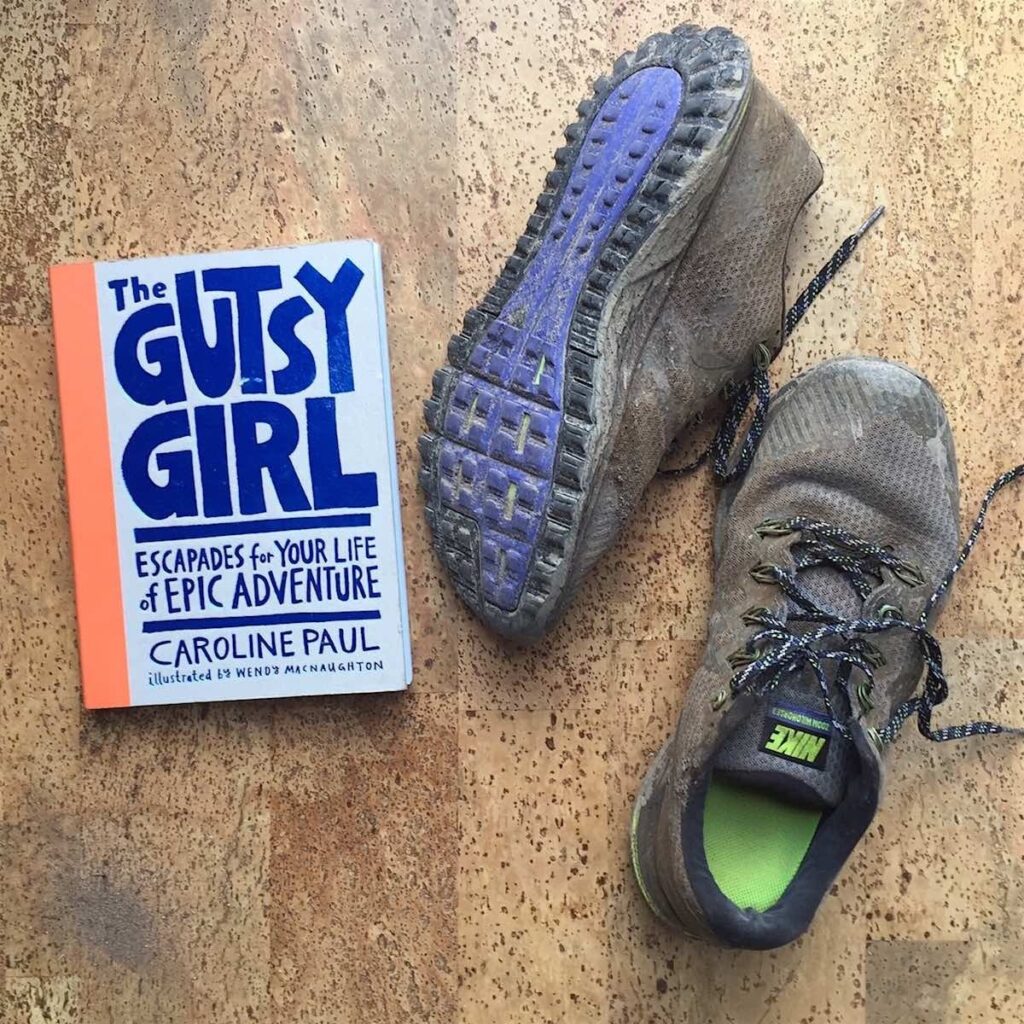

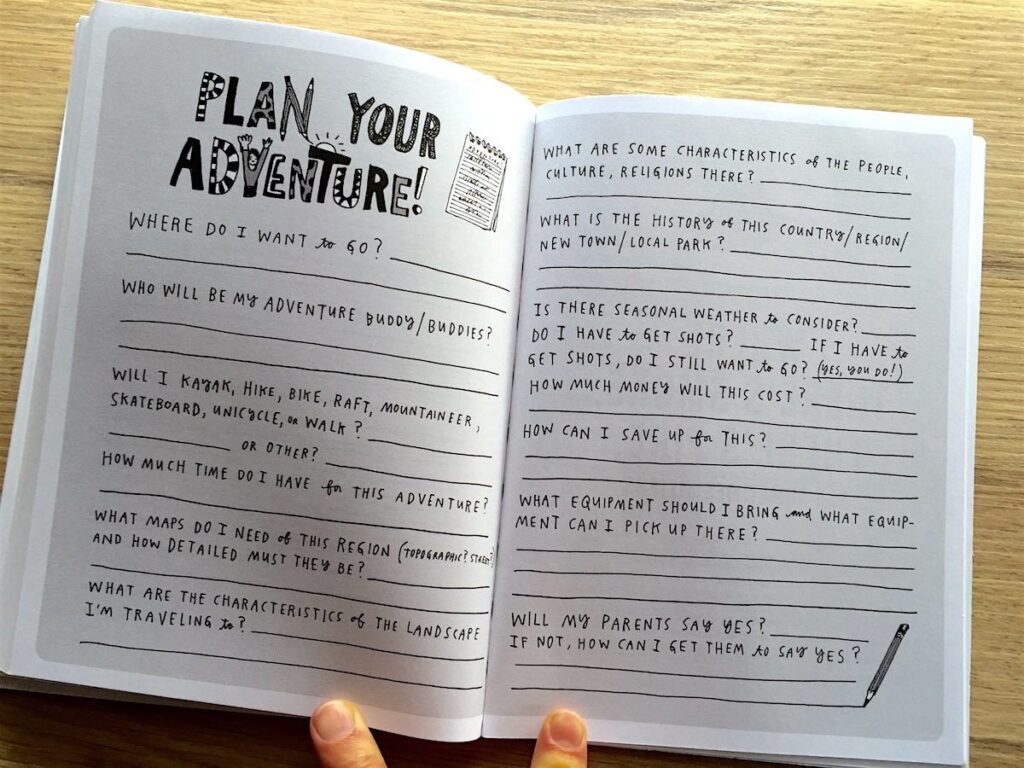
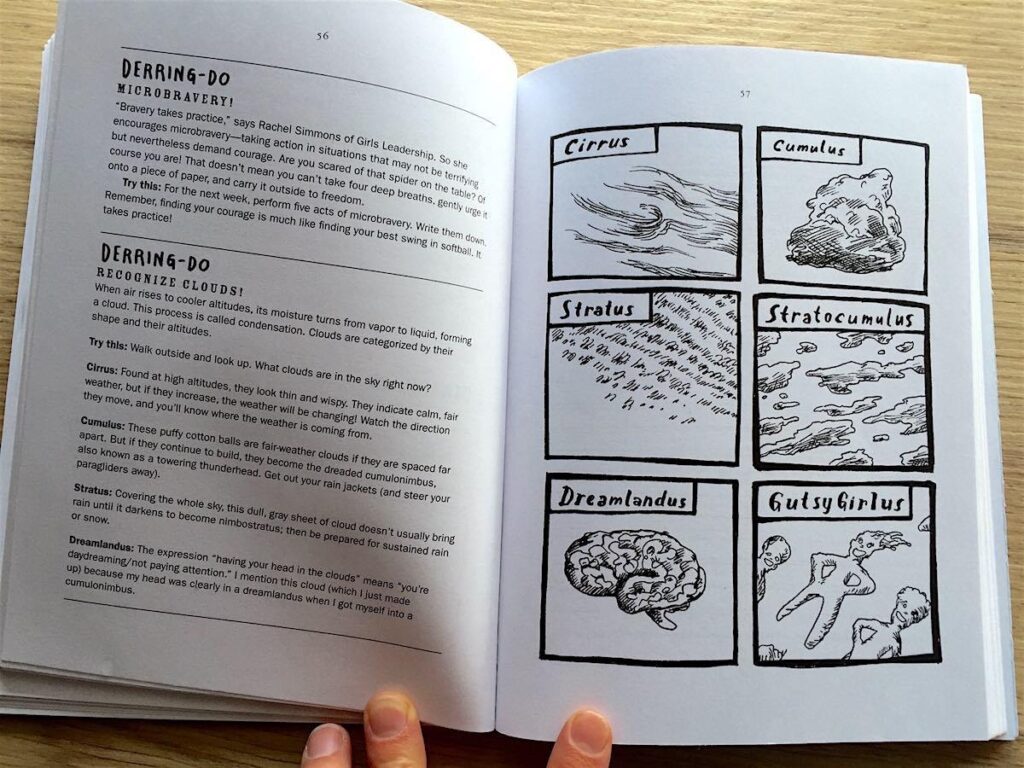
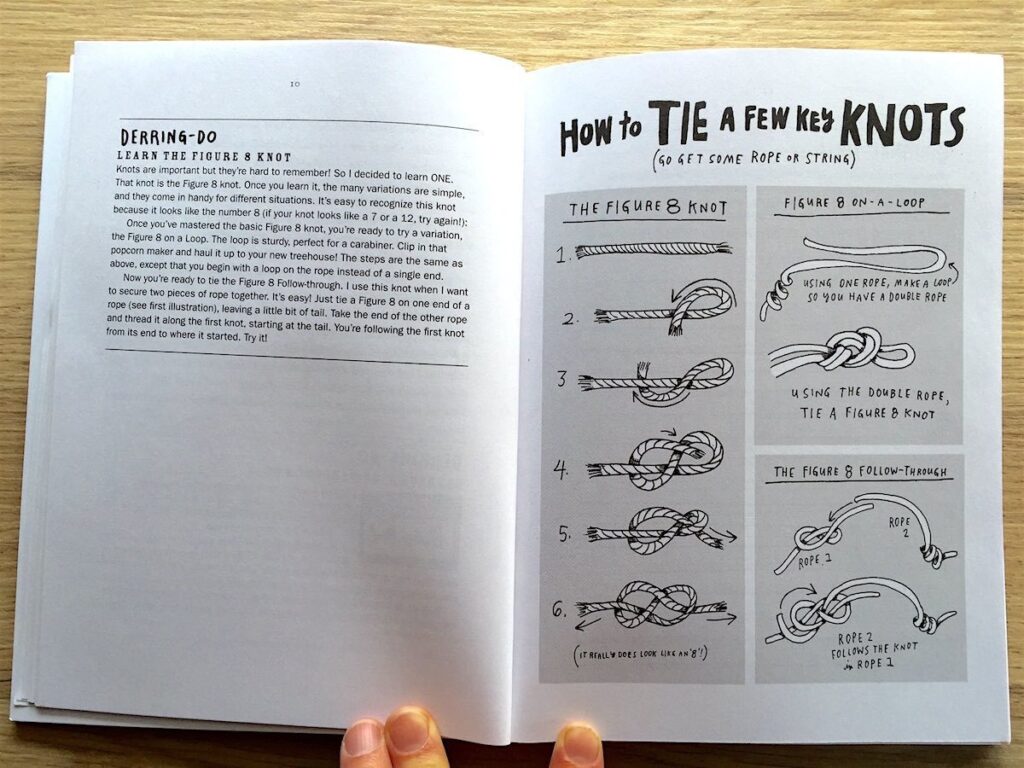
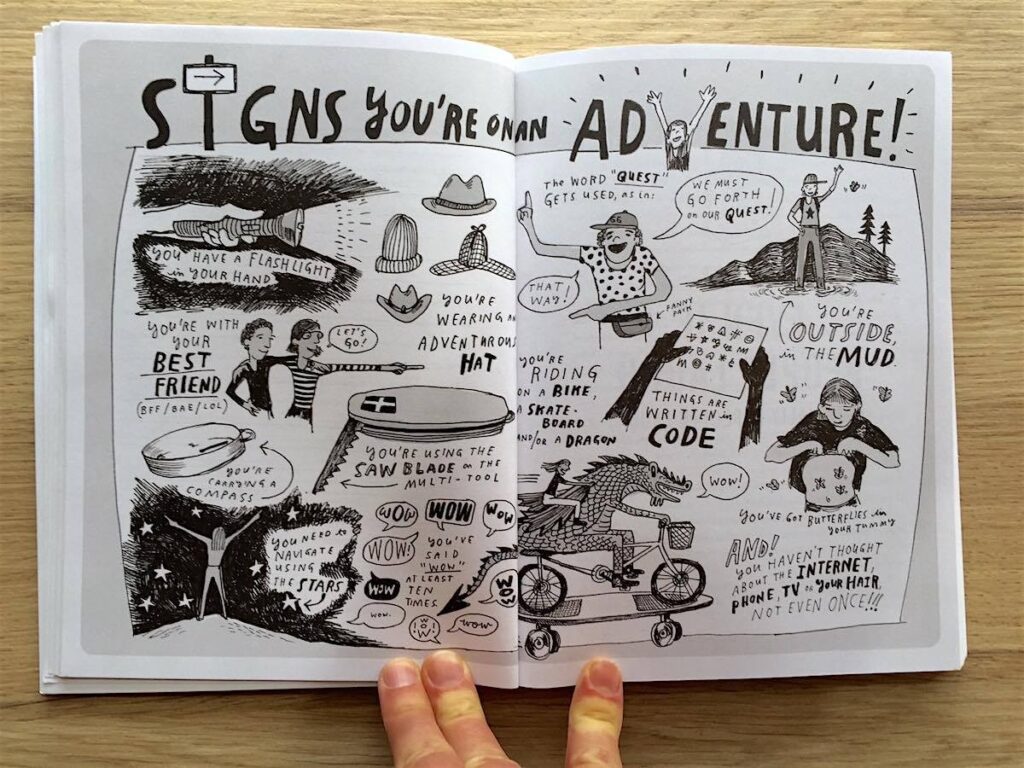
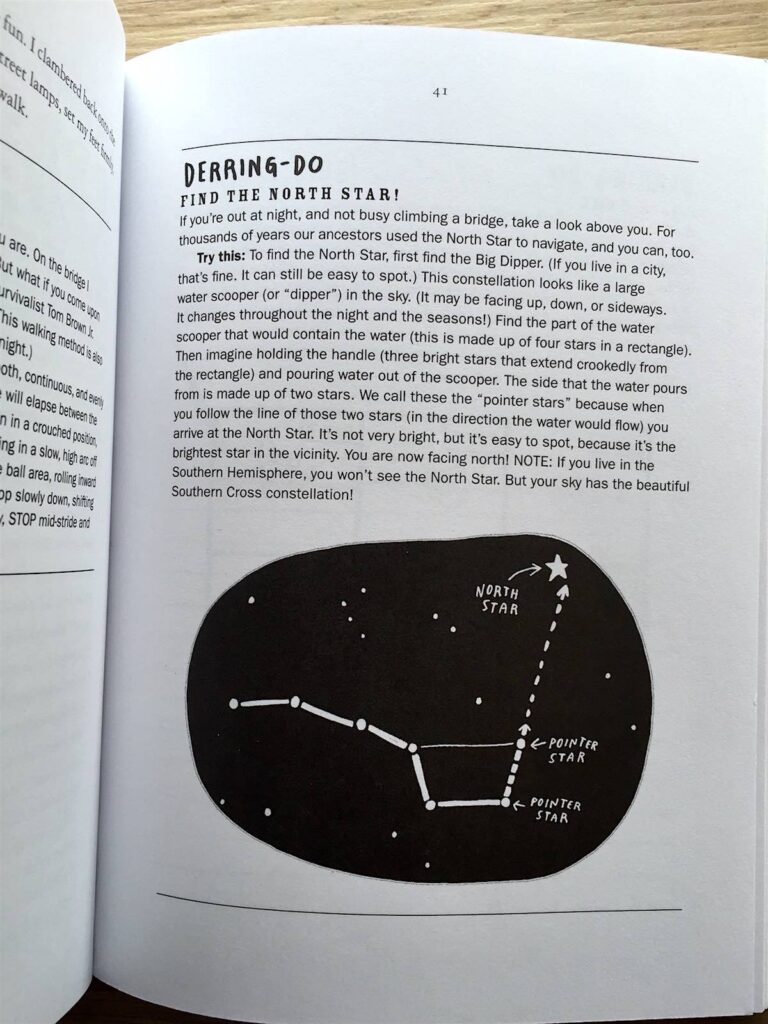
The Gutsy Girl: Escapades for Your Life of Epic Adventure
by Caroline Paul
Bloomsbury USA
2016, 160 pages, 6.4 x 8.6 x 0.7 inches
If ever there was a book I wished was around when I was little, it’s The Gutsy Girl. But I’m just as glad to have it in the world now. While I would have read it to pieces as a kid, it also gave grown-up me a powerful reminder: bravery and resilience are skills. Anyone can develop them.
The Gutsy Girl comprises author Caroline Paul’s stories of her own (mis)adventures, accompanied by short bios and quotes from other inspiring ladies, and helpful how-tos (make a compass outside, find the North Star, recognize animal tracks, etc.). All together, the book is everything it promises to be: escapades for your life of epic adventures.
Throughout the book, Paul models adventure through her own life, from racing a boat she made of milk cartons down a river as a young girl, to white-water rafting and working as a firefighter as an adult. And she shares what she’s learned along the way. While the lessons — about planning, communication, teamwork, knowing your limits and when to push them – and when not to — are valuable, I think the bigger idea is that all of her failures and triumphs are part of a learning process. With each new experience, Paul tests, hones, and ultimately grows her own bravery and resilience.
This idea is also sweetly captured by the book’s illustrator Wendy MacNaughton in a drawing titled “The Gutsy-O-Meter.” Readers are asked to rate themselves on a meter that swings from low guts (watching TV and sleeping) to high guts (sleeping to scaling ice cliffs.) If you’re at six (sleeping outside), the book encourages you to try seven (navigating through woods by compass). If you’re already a 10 — watch out world! – Sara Distin at Tiny Bop
SHOT IN THE ‘70S, NORTH AFRICAN VILLAGES SHOWS MEDIEVAL VILLAGES UNCHANGED BY MODERNITY


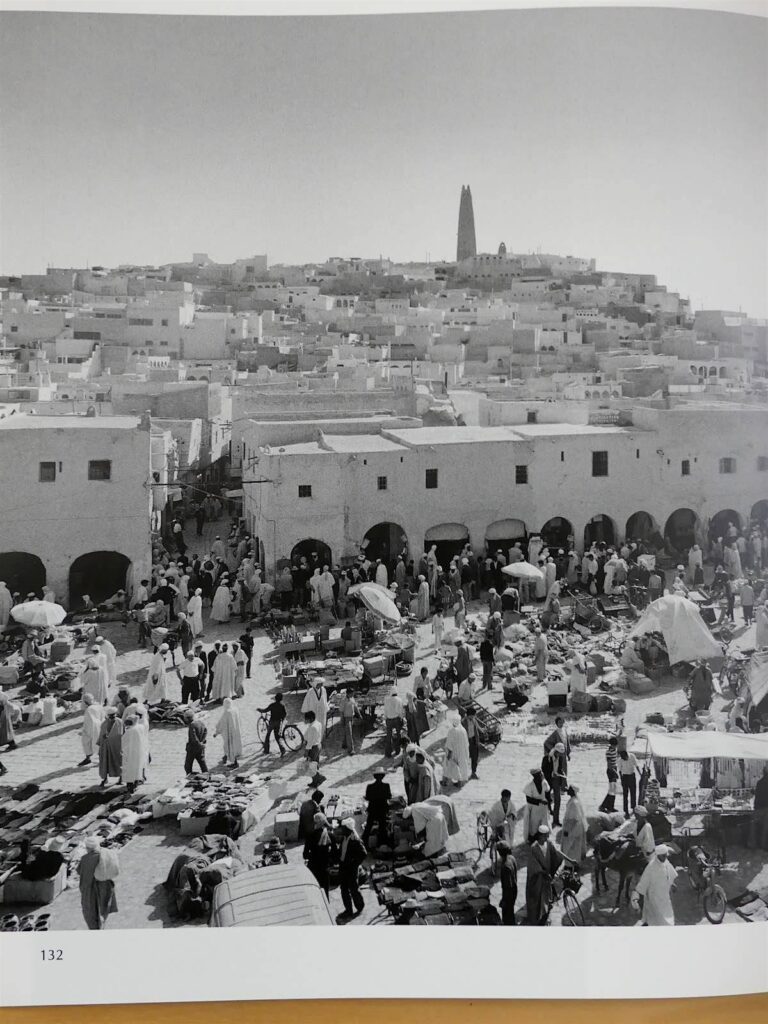


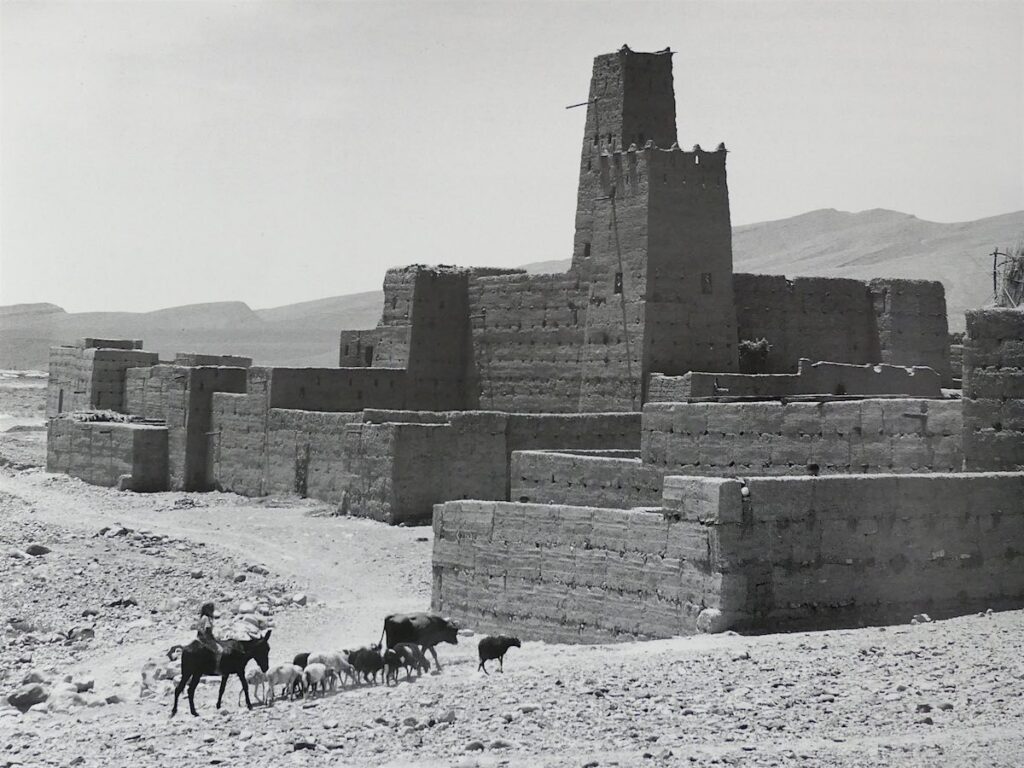


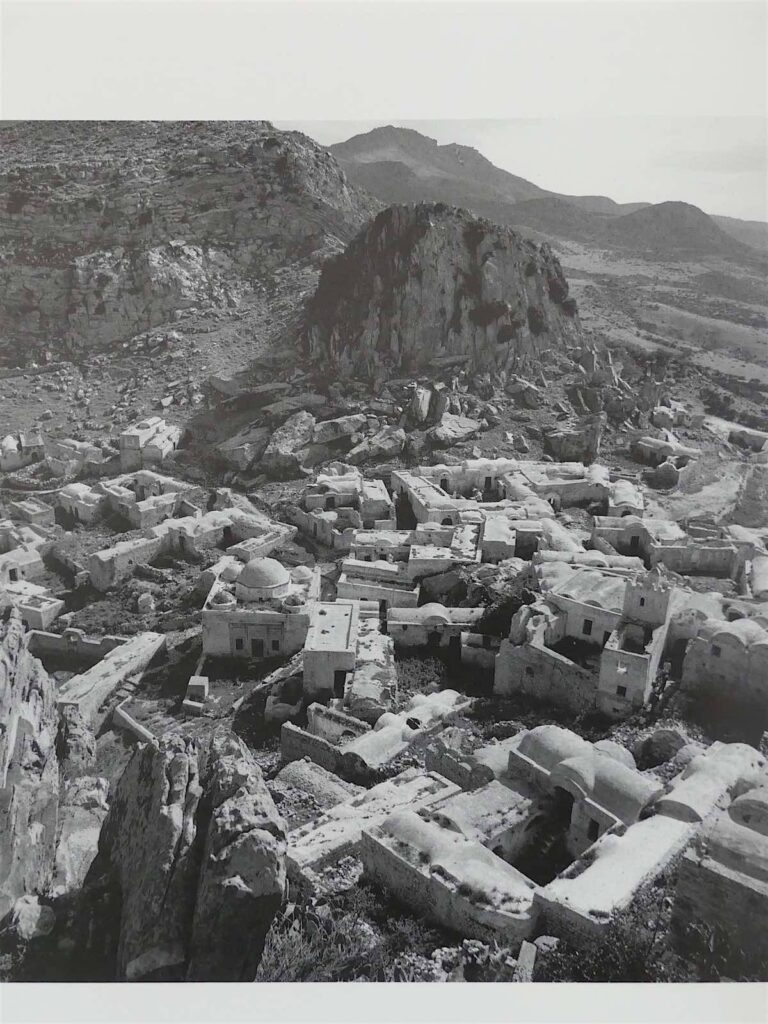
North African Villages: Morocco, Algeria, Tunisia
by Norman F. Carver
Documan Pr Ltd
1989, 200 pages, 9 x 10.5 x 0.5 inches (softcover)
In the 1970s an architectural student drove a VW van around Italy, the Iberian peninsula, and northern Africa, recording the intact medieval villages still operating in their mountain areas. The hill towns at that time in Italy, Spain, Morocco and Tunisia kept a traditional way of building without architects, using indigenous materials, without straight streets, producing towns of uncommon attractiveness. The architect, Norman Carver, later self published a series of photo books documenting these remote villages which had not yet been interrupted with modernity. They looked, for most purposes, like they looked 1,000 years ago. All of Carter’s books are worthwhile, but my favorite is North African Villages. Here you get a portrait of not just the timeless architecture, but also a small glimpse of the lives that yielded that harmony of the built upon the born. It’s an ideal of organic design, that is, design that is accumulated over time. – Kevin Kelly
12/16/2515 December 2025
Anatomy
Tools for Possibilities: issue no. 168

Anatomy atlases
Of my maybe dozen books on anatomy, this is the masterpiece: Atlas of Human Anatomy by Frank Netter. How any one human could do all these exquisite drawings in a lifetime is beyond me. The drawings of the hand are spectacular. There is no descriptive text, so I don’t know if this is the perfect text for helping with self-diagnosis, but this is a reference book anyone interested in the human body should have. I have an older 4th edition, but they recently released the 5th.
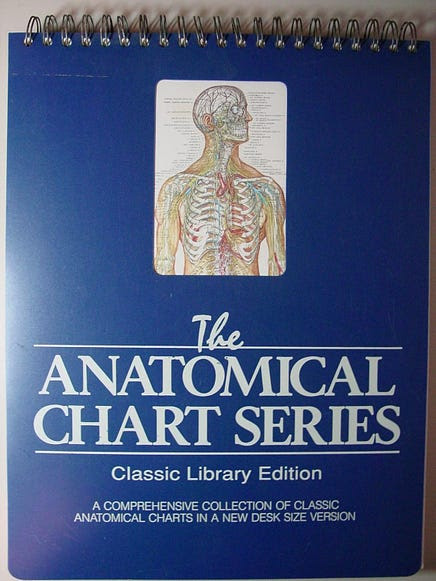
The Anatomical Chart Series by Peter Bachin and Ernest Beck is a flip-page guide that includes excellent anatomical charts. It appears to be out-of-print but you can find it used.
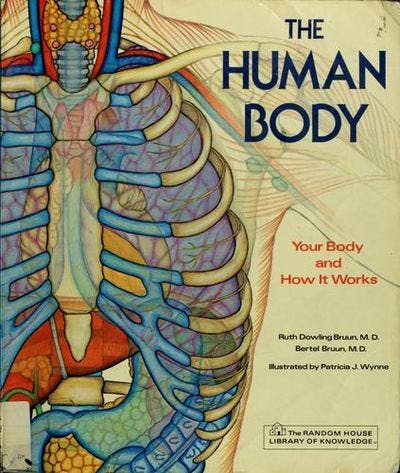
The Human Body by Ruth & Bertel Bruun is a great and colorful children’s anatomy book. You can find it used for around $3. — Lloyd Kahn
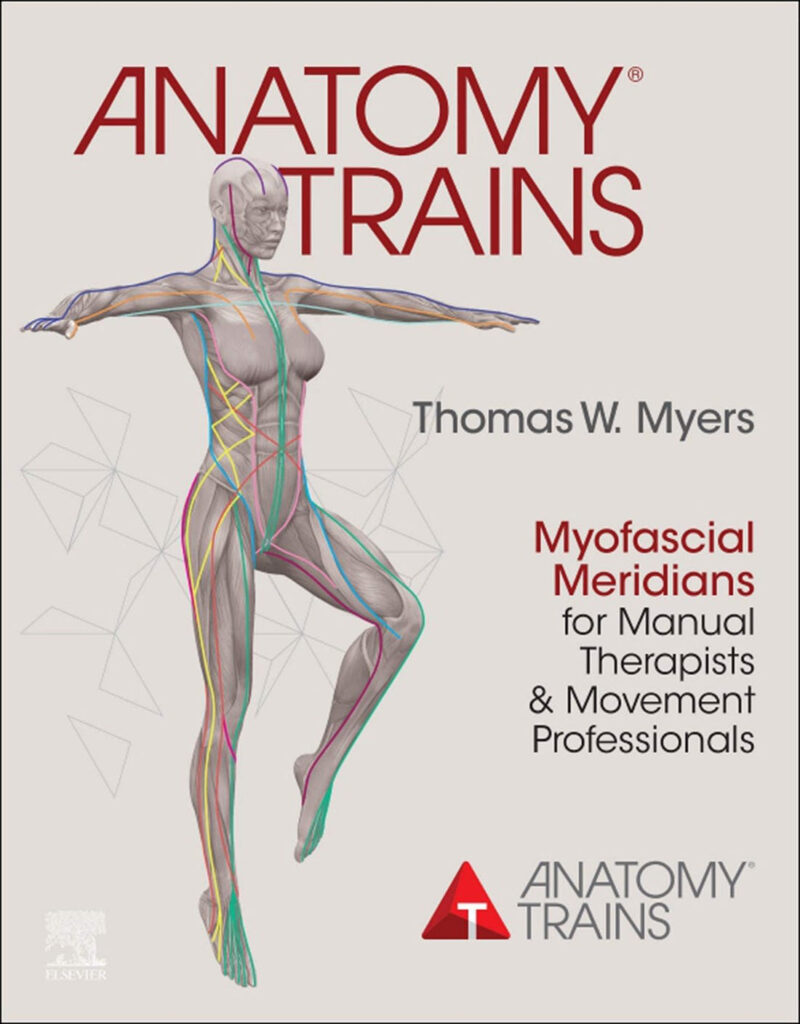
Holistic human anatomy
Anatomy Trains is a map of our musculoskeletal anatomy. It’s intended for hands-on and movement bodyworkers but is a great read for anyone interested in structure, whole-systems thinking, and brilliant design. I realized after doing Pilates for a while that I had no idea about anatomical structure and why Pilates was effective. While advocating no particular body/mind discipline, Anatomy Trains allowed me to understand why Pilates works. That was eight years ago; my understanding continues to expand over time.
Author Tom Myers asks a grand question: what would happen if we take a different cut at understanding the muscles and tendons? Instead of cutting against the grain at the ends, what happens when you follow the grain past the individual muscles and tendons and see how long the lines of tension go? Tom creates a set of rules and then starts mapping.
An anatomy expert could research and apply those rules themselves; I just followed along. The results are pretty cool: a map of about a dozen or so long lines of tension in our bodies. Most of them are longer than we are tall; some are almost twice as long. Some lines are roughly linear and some spiral around our torso and leg bones. Some lines are near the skin while some are next to the bones. Tom created a new term for these lines: myofascial meridians. Nobody has ever done this before, but the lines are real: Myers has gone into the lab multiple times with teams of students to dissect these long lines of tension in cadavers.
Myers studied under two remarkable body/mind instructors: Moshe Feldenkrais and Ida Rolf. He also studied under Buckminster Fuller, the great whole-systems engineer of the 20th century. The first chapter of the book, The World According to Fascia, provides a lot of background information for the mappings in the remainder of the book. Myers notes that there are three fractal/pervasive networks in our body: circulatory/chemical, nervous/electrical, and structural/spatial. He notes the elusiveness of the structural network: while we’ve had clear models of the first two for hundreds of years, our fine-grained structural network is still quite elusive. This is whole-systems thinking at its finest: lots of ideas how natural tech connects from the nano-scale to full-size human beings.
Like the great science book Godel, Escher, Bach: An Eternal Golden Braid, this book can be read at many different levels. The first way is just to look at the maps and the supporting drawings and charts. A second way is to read the various side discussions and notes. A third way is to plough straight through the rather dense text. I’ve never read AT from cover to cover, but I’ve gone through most of it and read almost all of the side discussions.
My one criticism of the book: its full title, Anatomy Trains: Myofascial Meridians for Manual and Movement Therapists, is enough to scare off those not in the industry. It is a wonderful and friendly book, but books like this must have a formidable title to be sold to medical/health professionals. The ideas it discusses are right on the edge of our understanding of biological systems, but there is not a milligram of woo-woo. — Phil Earnhardt

- Humans are not assembled out of parts like a car or a computer. “Body as machine’ is a useful metaphor, but like any poetic trope, it does not tell the whole story. In our modern perception of human movement anatomy, however, we are in danger of making this metaphor into the be all and end all. In actual fact, our bodies are conceived as a whole, and grow, live, and die as a whole- but our mind is a knife.

Body part replicas
I have an inexpensive (and unfortunately no longer available) 30-inch visible man sitting on my desk. Putting it together was an education; I couldn’t believe how much stuff we have crammed into our insides. Everyday the man-model reminds me of the wonder of our temporary home. To go deeper into the full catalog of human meat, you need the Anatomical Chart Company, which carries replicas of most human body parts. Eyes, guts, brains, etc. in three dimensions. They aren’t cheap, but they are detailed. I am looking for a spot in my studio to park their budget life-sized skeleton. It focuses one’s productivity. — KK
Budget Bucky Skeleton
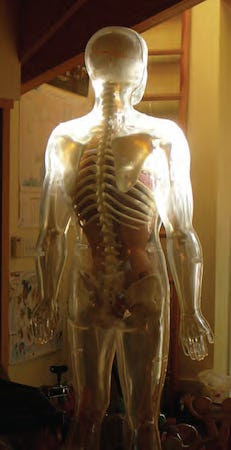
This economical, life-size articulated adult plastic model is our most popular school-level skeleton. It’s ideal for teaching the basics of anatomy when intricate textural nuances of the bone are not required. Articulated joints allow for movement. The arms and legs are removable for study. Features nerve branches, vertebral artery and herniated lumbar disc. Skull includes movable jaw, cut calvarium, suture lines, and 3 removable lower teeth. Includes rolling stand and the PortAPack Systems Set of 5 laminated 8-1/2″ x 11″ charts covering the Muscular, Skeletal, Nervous, Circulatory, and Digestive Systems. Also includes extra hardware for emergency repairs. Size: 5′ 6″ tall. Weight: 23 lbs.
Human Muscle & Skeleton Anatomy Model

A ton of anatomical detail in a tiny package, this 8 inch human skeleton and musculature anatomical model contains 46 detachable parts and display stand. This puzzle-like anatomy model also includes an illustrated assembly guide and description of the human anatomy along with some fun Q&A to test your knowledge. The hand painted parts are medical education quality.
Once a week we’ll send out a page from Cool Tools: A Catalog of Possibilities. The tools might be outdated or obsolete, and the links to them may or may not work. We present these vintage recommendations as is because the possibilities they inspire are new. Sign up here to get Tools for Possibilities a week early in your inbox.
12/15/25ALL REVIEWS
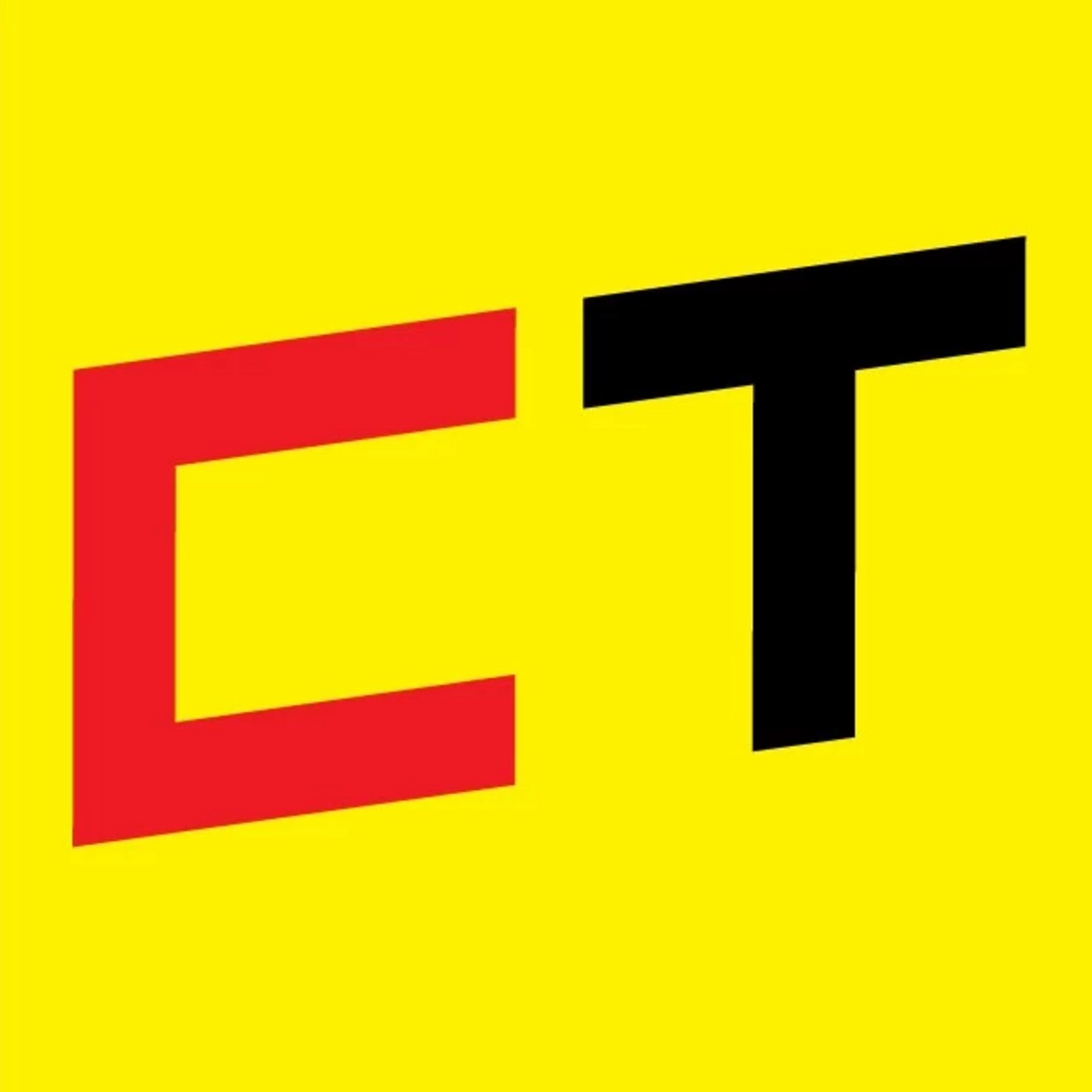 12/12/25
12/12/25
Gar’s Tips & Tools – Issue #207
Access to tools, techniques, and shop tales from the diverse worlds of DIY
EDITOR'S FAVORITES
COOL TOOLS SHOW PODCAST
WHAT'S IN MY BAG?
17 December 2025

ABOUT COOL TOOLS
Cool Tools is a web site which recommends the best/cheapest tools available. Tools are defined broadly as anything that can be useful. This includes hand tools, machines, books, software, gadgets, websites, maps, and even ideas. All reviews are positive raves written by real users. We don’t bother with negative reviews because our intent is to only offer the best.
One new tool is posted each weekday. Cool Tools does NOT sell anything. The site provides prices and convenient sources for readers to purchase items.
When Amazon.com is listed as a source (which it often is because of its prices and convenience) Cool Tools receives a fractional fee from Amazon if items are purchased at Amazon on that visit. Cool Tools also earns revenue from Google ads, although we have no foreknowledge nor much control of which ads will appear.
We recently posted a short history of Cool Tools which included current stats as of April 2008. This explains both the genesis of this site, and the tools we use to operate it.










